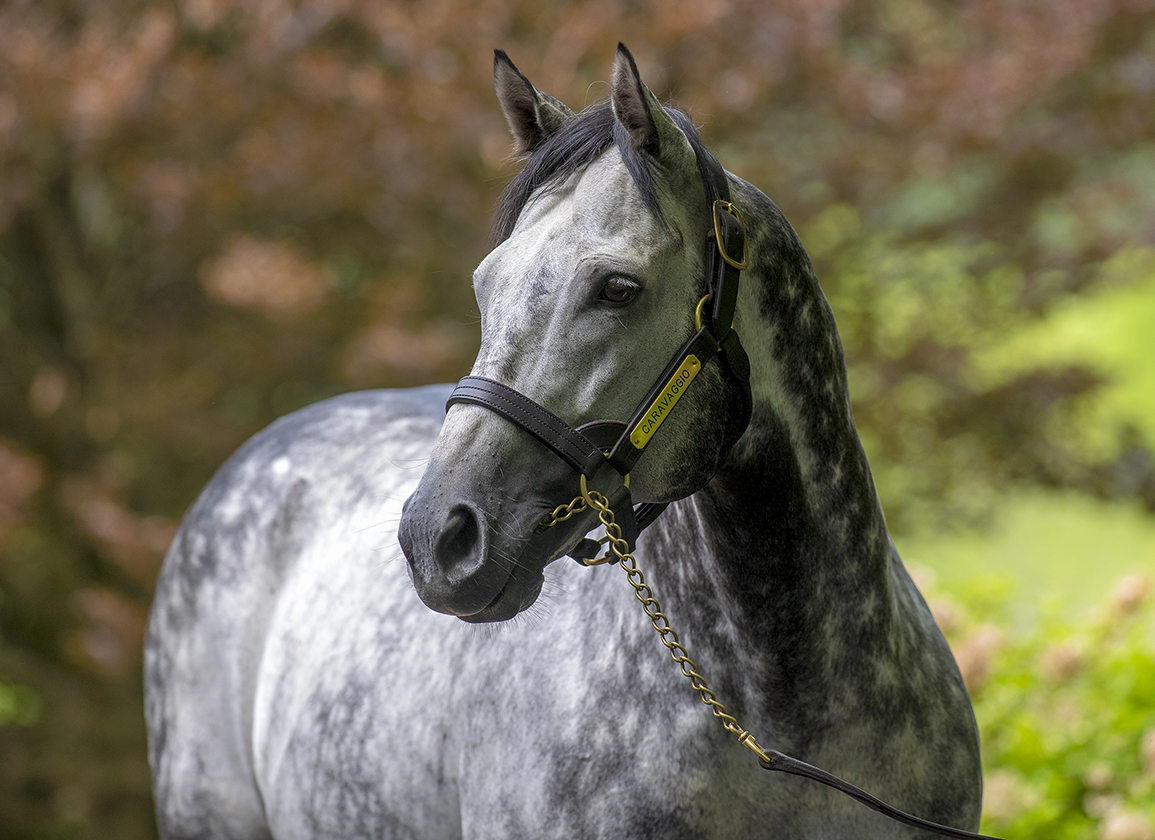By Gary King
Caravaggio's name has been plastered all over the TDN recently on the back of Porta Fortuna and Whitebeam's exploits. TDN's Gary King chatted with Dr. Shigeki Yusa, Manager of the JBBA Shizunai Stallion Station, about the well travelled stallion who now calls Japan home.
GK: How proud are you of Caravaggio's recent successes? Most notably Porta Fortuna and Whitebeam.
SY: The two wins in two days made us very happy, especially with Porta Fortuna winning two Group 1 races in a row with the recent Falmouth Stakes victory, and Whitebeam repeating in the Diana Stakes.
In addition, this year The Grey Wizard has won the U.S. GII Belmont Gold Cup Stakes and Tiber Flow has won the U.K. G3 John Of Gaunt Stakes, showing that his progeny have a wide range of success.
These achievements demonstrate that Caravaggio's progeny can be successful from the age of two and have further growth potential, which was good for our promotion to Japanese breeders.
カラヴァッジオ(USA)
Caravaggio pic.twitter.com/od1zLPOSmi— shigeki yusa (@yusas) June 22, 2024
The first foal born in Japan this year also has a well-balanced physique inherited from his sire and has a good reputation, so I can't wait to see him make his debut in two years.
GK: What encouraged the JBBA to purchase him from Coolmore in late 2022.
SY: We had our eye on offspring of Scat Daddy to carry on the sire line of Johannesburg, who stood at our stallion station. We had several candidates and made our selection based on a comprehensive assessment of their racing records, stud records, physique, etc.
GK: Can you describe how the JBBA works, please.
SY: Since its establishment in 1955, the Japan Bloodhorse Breeders' Association (JBBA) has provided the following support with the aim to achieve stable development of Japan's Thoroughbred breeding sector:
- Management of Stallion Stations: The JBBA manages three stallion stations in Shizunai (Hokkaido), Shichinohe (Aomori), and Kyushu, and provides internationally acclaimed stallions with high quality pedigrees at low stud fees.
- Farm Support: Subsidies for the improvement of farm facilities and the purchase of broodmares.
- Providing of Information: Since 1987, the JBBA has provided basic information on racehorses, stallions, broodmares and foals, racing results, and statistical information on sales through the Japan Bloodstock Information System (JBIS).
- Human Resource Development: The JBBA trains personnel related to the breeding and pre-training of Thoroughbred horses through its Stud Personnel Training Program.
GK: How many mares has Caravaggio covered each year at the JBBA?
SY: In 2023, 128 mares, and in 2024, 70 mares.
GK: Of the mares covered by Caravaggio in Japan, any high-profile ones?
SY: Here's a list:
- Graded Stakes Winner: Namura Lycoris by Jo Cappuccino, Winner of the Hakodate Nisai Stakes (G3, Turf 1200m)
- Dam of Graded Stakes Winner: Baika Tarquin by Empire Maker, Dam of Walzer Schall by Makfi, winner of the March Stakes (G3, Dirt 1800m)
- Daughter of Group 1 winner, half-sister to Group 1 winner, etc.: Viva Pace by Empire Maker, Her dam, Peace of World was the JRA Champion Two-Year-Old Filly and winner of the Hanshin Juvenile Fillies (G1, Turf 1600m)
- Keep On Going by Deep Impact, Her dam, Lady Joanne (USA) is a winner of the Alabama Stakes (G1, Dirt 10F)
- Normalcy by Rulership, Her half-sister, Whale Capture is a winner of the Victoria Mile (G1, Turf 1600m)
In addition to the above, Caravaggio has covered many mares from the Sunday Silence (such as Deep Impact) and King Kamehameha bloodlines.
GK: The JBBA stands many stallions that are well known in Europe and America. Sharp Azteca, Declaration of War, Makfi, Noble Mission, Mischievous Alex, Bago, Animal Kingdom, David Junior, Creator, Aldebaran, Cape Blanco and Squirtle Squirt. What do you look for when acquiring a stallion for the JBBA?
SY: In order to breed and train high-quality horses that are internationally competitive, it's essential to introduce superior genes and prevent extreme narrowing of bloodlines.
With the aim to improve the quality of Japanese-bred horses, the association has made the introduction of excellent Thoroughbred stallions a major pillar of its breeding business.
Noble Mission 🚀
ノーブルミッション(GB) pic.twitter.com/6waNgq6vfN— shigeki yusa (@yusas) June 26, 2024
Our goal is to import many excellent stallions from all over the world to raise the standard of Thoroughbred breeding in Japan, prevent excessive concentration of certain bloodlines, and contribute to the diversification of Thoroughbred breeding in Japan. Fourteen of the 15 stallions currently standing at the JBBA are imported from overseas.
Dancing Brave, who was an imported stallion that stood at the JBBA in the past, has left a significant mark on the current pedigree of Japanese horse racing, with progeny such as King Halo who is the broodmare sire of Equinox, and Kyoei March (winner of the Oka Sho, Japanese 1000 Guineas), who is the second dam of Marche Lorraine, winner of the GI BC Distaff.
Not a subscriber? Click here to sign up for the daily PDF or alerts.






